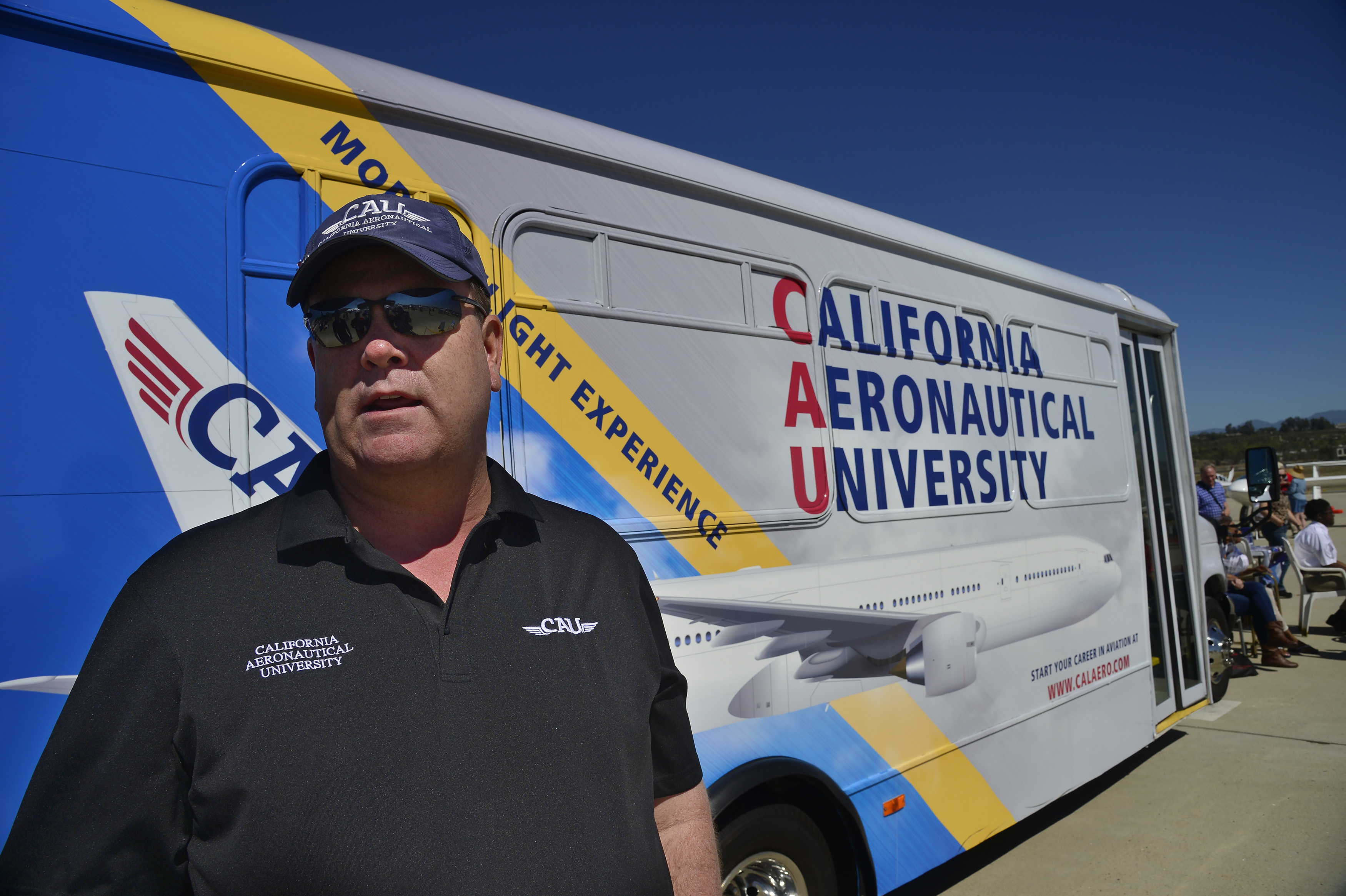CAU students ‘live, sleep, and breathe aviation’
While students practiced approaches on a pair of flight simulators inside California Aeronautical University’s rolling classroom, school president Matt Johnston greeted guests and answered questions from the wind-swept Camarillo, California, ramp about one flight-hour south of the pristine Bakersfield aviation campus. The college was the presenting sponsor of AOPA's Camarillo Fly-In April 28 and 29 and has since become the newest AOPA Supporting Sponsor. The university traces its roots to the Santa Barbara Business College established in 1888.
Overhead, CAU representative Vicki Benzing pierced the sky in her red 1940 Stearman biplane with the school's logo displayed on its fuselage, drawing further attention to the institution.
The traveling classroom with its large mural and flight sims is an innovative device for the next generation of aviators, said Johnston. High school students studying science, technology, engineering, and math (STEM) concepts are drawn to the unique classroom. “It’s kind of funny, we’re standing right in front of the biggest tool we have for that—it’s a mobile flight experience bus that we roll to high schools for career days” and other learning experiences. STEM students can put into practice the aviation principles they’ve studied by trying their hand at the flight simulators amid the virtual mountains and valleys of Southern California. “It’s a big hit.”

Johnston said CAU students can earn their bachelor’s degree and also obtain their private, instrument, commercial, CFI, CFII, and multiengine ratings within the first two years of classes. He explained that during their third year, students complete additional courses that put them on an aviation career path to the airlines. CAU has already established pipeline programs to SkyWest Airlines, Piedmont Airlines, GoJet Airlines, and Air Wisconsin Airlines, “and we’re working on a few others,” he added.
College students fly a fleet of five Cessna aircraft, including Garmin glass-panel Skyhawks, with two additional aircraft expected by the end of the summer—a Cessna 172RG for commercial ratings, and a Beechcraft Baron B58 for twin training. Students can practice on two Frasca twin simulators, a full-motion Redbird flight simulator, and several non-motion simulators in the university’s educational facility.
“We keep everybody pretty busy in aviation. They live, sleep, and breathe aviation at our 22-acre campus,” explained Johnston. The school has a café and chefs on staff to make sure students are well-fed. A recreation center with a 25-meter pool; volleyball, tennis, and basketball courts; a weight room; and other facilities keeps students fit. Students in dorm rooms can customize their digs with pin-up posters of their favorite aircraft or they can relax after classes with Top Gun and other aviation-themed favorites.
Graduates from CAU’s bachelor of science in aeronautics program are eligible to receive a 500-hour reduction in their FAA-mandated airline transport pilot (ATP) flight hour requirement, which is normally set at 1,500 hours. Students completing an associate of science degree in aviation studies can receive a 250-hour reduction in the ATP requirement. Both programs allow students the opportunity to interview for a flight instructor position after graduation.
The school also offers an aviation business program and post-graduate degrees in business and aviation. CAU counts "about 100 students and our fall is filling up," he said.
Johnston shared a few tips for potential CAU students: "Study, and prepare yourself to focus. Aviation is fun but it’s also a serious, serious business. You need to put in the time, hit the books, and enjoy the skies.”





